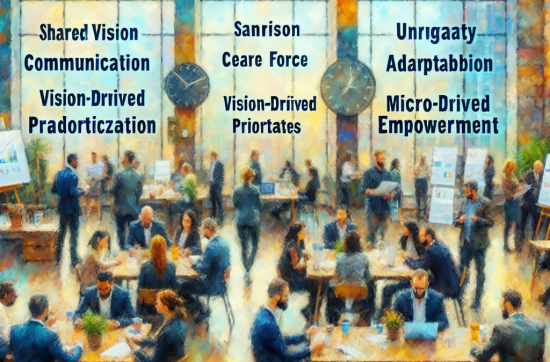Background: The Cynefin Framework is a sense-making tool for problem-solving, and I often use it as a foundational reference when exploring how we approach the work we do. Today, I…
Blogs
Coordinate cross-functional efforts
Coordinate cross-functional effortsThe post will focus advice for beginners, with targeted advice for newcomers, drawing on the wisdom of experienced product owners.
Actively participate in all Scrum ceremonies
Actively participate in all Scrum ceremoniesThe post will focus on measuring success: Outcomes and Indicators for that activity. Objective: Describe indicators of successful activity completion, incorporating both qualitative and quantitative measures.
Demonstrate Visionary Leadership
Demonstrate Visionary LeadershipThe post will focus on expert advice, outcomes and Indicators for that activity. Including expert insights, real-world applications & practical advice to guide Product Owners in integrating these activities into their strategies.
Coordinate with other teams and departments
Coordinate with other teams and departmentsThe post will be about navigating Challenges with the various Product Owner activities
With regard to the challenges, the objective is to discuss potential challenges and considerations associated with the activity, including common pitfalls and obstacles. Offer practical advice on how to address these challenges, ensuring readers are prepared to tackle them effectively.
Foster a Culture of Experimentation
Foster a Culture of ExperimentationThe post will focus on measuring success: Outcomes and Indicators for that activity. Objective: Describe indicators of successful activity completion, incorporating both qualitative and quantitative measures.
Impediment Removal and Team Facilitation
Impediment Removal and Team FacilitationThe post will focus on measuring success: Outcomes and Indicators for that activity. Objective: Describe indicators of successful activity completion, incorporating both qualitative and quantitative measures.
Be available to answer the team’s questions
Be available to answer the team’s questionsThe post will focus on measuring success: Outcomes and Indicators for that activity. Objective: Describe indicators of successful activity completion, incorporating both qualitative and quantitative measures.
Regularly Review and Adjust the Product Backlog
Regularly Review and Adjust the Product BacklogThe post will be about navigating Challenges with the various Product Owner activities
With regard to the challenges, the objective is to discuss potential challenges and considerations associated with the activity, including common pitfalls and obstacles. Offer practical advice on how to address these challenges, ensuring readers are prepared to tackle them effectively.
Regularly report to stakeholders
Regularly report to stakeholdersThe post will focus a concise checklist summarizing key action points for that activity to reinforce learning and provide a quick reference guide.









